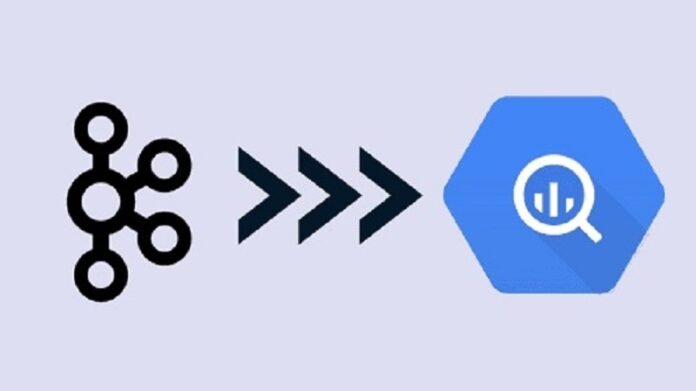Businesses are always looking for new ways to use real-time data to gain actionable insights in today’s data-driven environment. A potent solution for handling real-time data streams has emerged: Apache Kafka, a distributed streaming platform. Google BigQuery, on the other hand, is a fully managed, serverless data warehouse that provides powerful analytics capabilities. We will examine the transition from Kafka to BigQuery in this post, emphasising the important ideas, advantages, and difficulties of setting up a smooth data pipeline for real-time analytics.
1: The Kafka Effect
A Distributed Streaming Platform Called Kafka by Apache Kafka is a distributed streaming platform that is open-source and made for creating streaming applications and real-time data pipelines. It is well known for its capacity for low-latency message processing, scalability, and durability.
1.2 Important Kafka Ideas
Data is categorised into subjects, which stand in for data streams. Consumers subscribe to themes where producers publish data.
The division of topics into partitions enables the distribution and parallel processing of data.
Producers: Producers are in charge of adding information to Kafka subjects.
Consumers: To process and analyse the data, consumers subscribe to Kafka topics.
2: Google BigQuery’s Allure
2.1 A Serverless Data Warehouse: BigQuery
Using the processing power of Google’s infrastructure, Google BigQuery is a fully managed, serverless data warehouse that enables incredibly quick SQL queries. It allows real-time data intake and is built for large-scale data analytics.
2.2 Major Features of BigQuery
Serverless: You only pay for what you use; no infrastructure provisioning or management is necessary.
Scalability: BigQuery is capable of handling both massive datasets and challenging queries.
Real-time Data intake: This feature enables the real-time intake of data from a variety of sources, making streaming data analytics possible.
Federated Queries: You can query BigQuery data as well as data from other Google Cloud services, other data sources, and even data that is held on-premises.
3: Creating a Pipeline from Kafka to BigQuery
3.1 Kafka Data Ingestion
To publish real-time data to Kafka topics, use Kafka producers.
Set up Kafka Connect to capture and stream data from Kafka topics to BigQuery. Kafka Connect is a framework for linking Kafka with external data sources.
3.2 Schema Evolution and Data Transformation
To conform to BigQuery’s schema requirements, transform data as necessary. Nested structures may need to be flattened, data types may need to be changed, or other transformations may be necessary.
Create a plan for schema evolution to account for evolving data structures.
Data Loading into BigQuery, step
3.3 Use the streaming data ingestion capability of BigQuery to instantly load data from Kafka topics into BigQuery tables.
Depending on your needs for data transformation, configure explicit schemas or configure schema auto-detection.
4: Advantages and Difficulties
4.1 Benefits of Integrating Kafka and BigQuery
Real-time Analytics: Utilise BigQuery to continually ingest and analyse data from Kafka to gain real-time insights.
Scalability: Kafka and BigQuery are both very scalable, enabling you to easily handle expanding data volumes.
Enjoy the ease of a serverless data warehouse with BigQuery, which eliminates the need for infrastructure management overhead.
Cost-effectiveness: BigQuery’s pay-as-you-go pricing allows you to only pay for the storage and queries you really use.
4.2 Obstacles and Things to Think About
Data Volume: Managing large amounts of data in real time can be expensive and resource-intensive.
Data translation: Schema evolution and data translation both call for careful preparation and may add complications.
Monitoring and troubleshooting: Use efficient monitoring and alerting to deal with problems like failed data intake or schema changes right away.
Data Governance: Ensure that security safeguards are in place to safeguard sensitive data.
Five: Actual Use Cases
Fraud Prevention and Detection
Kafka should be fed with real-time transaction data from many sources.
To analyse transaction patterns and spot anomalies instantly, use Kafka Streams or another stream processing technology.
The processed data is streamed into BigQuery for additional analysis and research.
5.2 Customised Marketing Initiatives
Gather information about consumer interactions in real time from web and mobile applications.
To segment customers and send personalised marketing messages in real time, use Kafka and stream processing.
To perform historical analysis and campaign performance review, save customer engagement data in BigQuery.
6: In conclusion
Organisations now have a potent tool for extracting real-time insights from streaming data thanks to the combination of Apache Kafka and Google BigQuery. A powerful combo for creating data pipelines that give real-time insights is BigQuery’s scalability and analytics capabilities combined with Kafka’s robust streaming infrastructure.
While the transition from Kafka to BigQuery may involve difficulties with data volume, transformations, and monitoring, the advantages of real-time analytics, scalability, serverless architecture, and cost effectiveness make it an appealing option for businesses looking to maximise the potential of their streaming data.
In conclusion, the Kafka-to-BigQuery pipeline is a critical step towards modernising data analytics, empowering businesses to make wise choices immediately and gain an advantage in today’s data-driven environment.
Must Read: Coaching in the Digital Age: Leveraging Technology for Enhanced Training and Development



































































